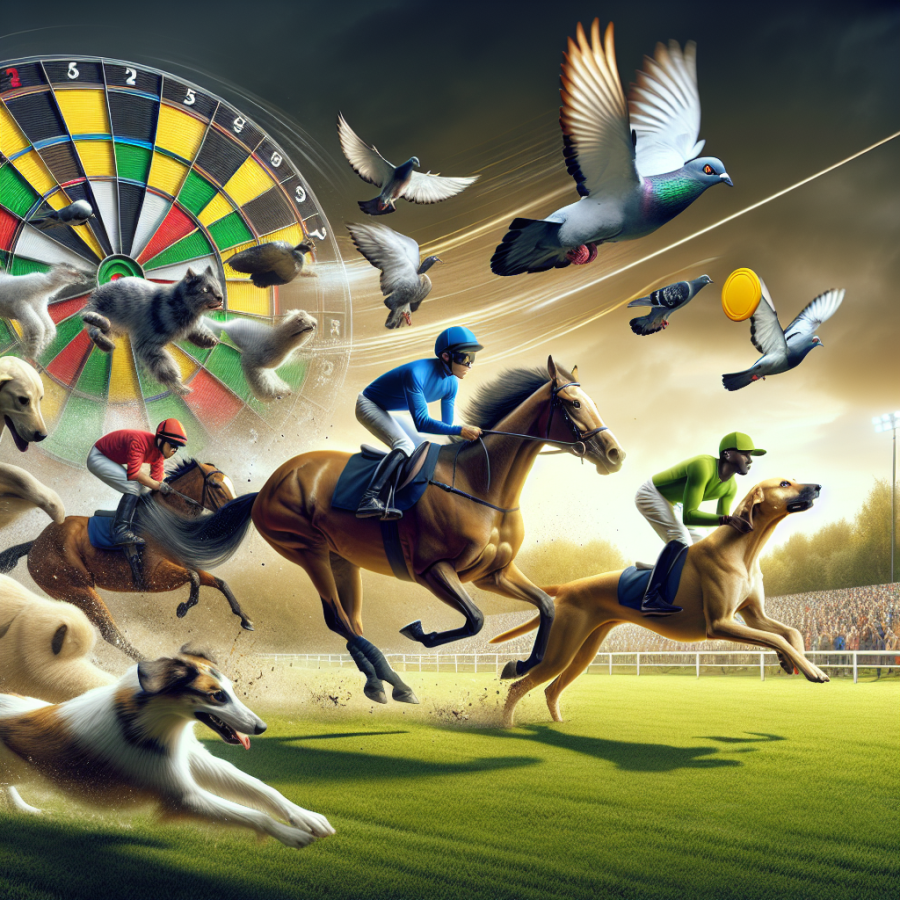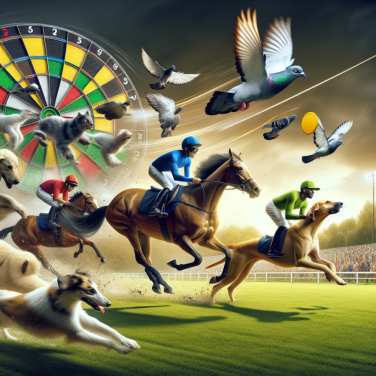Exploring the Depths of Animal Sporting Competitions
Within the realm of animal sporting competitions, a wide variety of events celebrate the physical abilities and intelligence of different species. From the widely recognized thoroughbred horse races to the lesser-known but equally thrilling dog agility trials, these competitions not only showcase the animals' prowess but also the deep bond between the animals and their handlers.
**Horse Racing and Equestrian Events**
Horse racing, one of the oldest and most glamorous animal sports, tests the speed, endurance, and heart of the equines. Races like the Kentucky Derby and the Grand National captivate audiences worldwide. However, these spectacles of speed only scratch the surface of equestrian sports. Dressage highlights the grace and discipline of horses and riders as they perform a series of intricate, predefined movements. Eventing combines dressage with the excitement of cross-country and show-jumping phases, pushing the horse-and-rider teams to their athletic limits.
**Greyhound and Pigeon Racing**
Similarly, greyhound racing presents the athletic prowess of these sleek canines as they chase after a lure on a track. Although the ethical considerations have led to declining popularity and legal bans in some areas, it remains a deeply entrenched sport in certain cultures. Pigeon racing, while not as mainstream, features the homing abilities of these birds, which can navigate across vast distances to return to their home lofts. The dedication of pigeon fanciers and the birds' astonishing navigational skills make this a fascinating and unique sporting community.
**Dog Sports: Agility, Herding, and Flyball**
Dog sports extend beyond the racetrack to agility competitions, where canines dart through obstacle courses with impressive speed and precision, guided by the signals and voice commands of their handlers. Herding trials celebrate the natural instincts and trained behaviors of sheepdogs as they maneuver flocks of sheep through complex patterns. Flyball offers a high-energy relay race where teams of dogs leap over hurdles to catch a ball and race back so the next team member can take their turn.
**Bullfighting and Rodeo**
Bullfighting is a controversial sport deeply rooted in tradition, blending art and athleticism with an undeniable undercurrent of violence and ethical debate. Alternatively, the rodeo circuit in North America celebrates cowboy skills of cattle herding with events like bull riding, barrel racing, and steer wrestling. Unlike bullfighting, many rodeo events have adapted to emphasize animal welfare alongside the cultural appreciation of ranching skills.
Read also:
Mastering the Mechanics of the Weight Throw Event
The Ethical Debate: Animal Welfare in Competitive Arenas
Within the competitive world of animal sports, a fiery ethical debate rages, scrutinizing the delicate balance between the thrill of the competition and the welfare of the participating animals. In the pursuit of victory and entertainment, questions arise regarding the moral implications of using animals as performers and athletes. Animal sports, such as horse racing, dog sledding, and bullfighting, to mention a few, often place animals at the center of intense training, performance pressure, and sometimes, life-threatening risks.
One of the core arguments presented by animal welfare advocates is the notion of consent. Unlike human athletes, animals cannot give informed consent to participate in sports or understand the potential risks involved. They are subjected to rigorous training schedules, and there are concerns about the methods used to enhance their performance. Performance-enhancing drugs, which can have long-term health repercussions, are a significant point of contention. The debate intensifies when the use of whips, spurs, and other pain-inducing devices come into play, questioning whether these are disciplining tools or instruments of cruelty.
The breeding practices that seek to produce the finest athletic specimens also draw criticism. Selective breeding can result in genetic health issues, which may cause chronic pain or shortened lifespans for these animals. Additionally, the fate of animals that do not meet competitive standards, including the potential for neglect or disposal, adds a darker shade to the overall portrait of animal sports.
Proponents of animal sports often argue that regulations and improvements in veterinary care have made these competitions safer and more humane than ever before. Advances in animal nutrition, fitness, and rehabilitation are all cited as evidence of progress in upholding animal welfare. Furthermore, many believe these sports celebrate the physical abilities of the animals, and when conducted responsibly, they do not inherently contravene ethical standards.
The market demand for animal sports steers a significant economic engine, with substantial investments and returns at stake. This economic perspective can complicate the ethical debate, as financial incentives may overshadow the welfare consideration of the animals involved. The influence of tradition and culture also plays a role, as many of these sports have deep historical roots and are seen as an integral part of cultural heritage, complicating efforts to modify or abolish them.
Ultimately, advocates for reform call for thorough and transparent regulation, genuine enforcement of animal welfare standards, and, in some cases, a complete reevaluation of the role animals play in competitive human entertainment.




